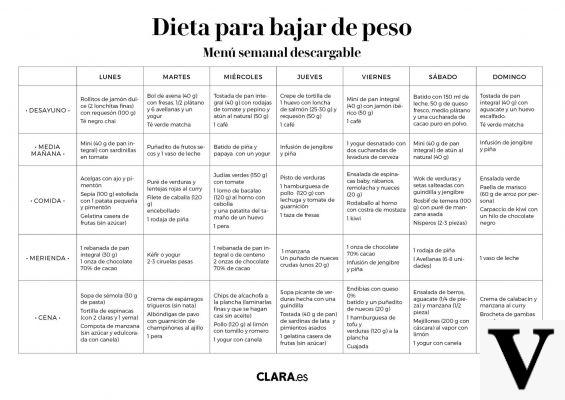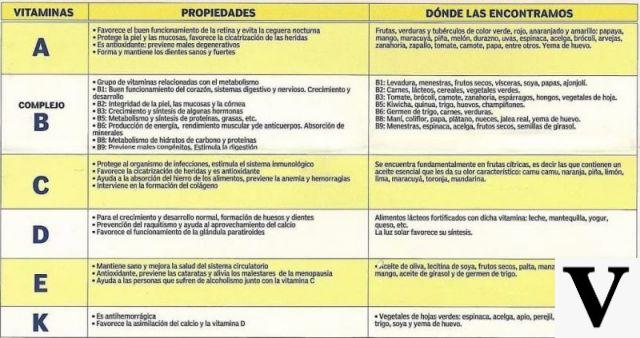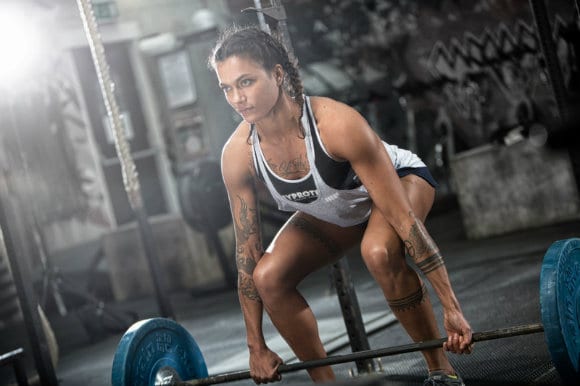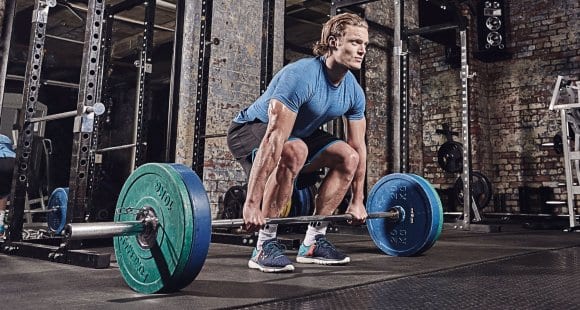
Introduction
In this article we will talk about the weight loss diet, or what is meant and how it should be organized; for obvious reasons, despite the vastness of the subject, we will be quite concise.
More precisely, the purpose of the article is to show a "classical method", academic, aimed at a diet that allows the reduction of excess fat mass (FM), not weight in the strict sense of the term. The goal of a slimming diet must in fact be an improvement in body composition, i.e. the FFM (lean mass) and FM ratio, therefore of the state of health, not a simple weight reduction - which can also be obtained by poorly nourishing the person. .
We will not talk about differentiated systems, such as the metabolic diet, the dissociated diet, the zone diet, the discharge diet, the Phillips hypo-hypercarbohydrate diet, the pH diet or alkaline diet, the Paleolithic diet or paleodieta, the Scarsdale diet, the Gift diet, the Lemme diet, the Atkins diet, the Mayo diet etc. Each of these schools takes up the space of a textbook and, with rare exceptions, they are usually not very shareable.
We remind you that what we are going to explain has purely a popular and informative function but, being dietetics a very serious discipline that requires years of study and practice or training, for an ad hoc job it is advisable to contact authorized professionals such as dieticians.
What we are going to summarize in a concise way to say the least is a simple method to evaluate one's basic anthropometric characteristics, therefore the caloric requirement, the breakdown into macronutrients and the amount of meals - with some practical reference.
Warning! Subjects <18 years of age, pregnant women, nurses and people with pathologies will not be taken into consideration. The basic anthropometric estimate and caloric needs also exclude athletes and particularly muscular subjects.
For further information: Low-calorie dietData detection
Who are you?
The introduction of the anamnestic form is dedicated to understanding "who you are". In short, it is necessary to mention the important elements, that is "what do you do in life", "possible presence of any pathology, allergy or food intolerance" and "what are your goals".
Essential measurements and parameters
Any self-respecting dietary protocol cannot ignore the characteristics of the subject in question. Summarizing:
- Age;
- Sex;
- Height measured in the morning (measured in centimeters or meters)
- Weight measured fasting and after evacuating (measured in kilograms)
- Counter-dominant wrist circumference measured at the narrowest point (measured in centimeters).
In the field of fitness, space is also given to classifications that are not scientifically supported, such as the somatotype (endomorph, ectomorph, mesomorph) and biotype (clavicular, trapezoidal, etc.). In theory, endomorphic subjects tend more easily to gain weight and gain muscle mass, while on the other hand ectomorphic subjects are generally hardgainers in both lean and fat mass. We will not dwell on the real usefulness of these catalogs, limiting ourselves to underlining that, especially for those who simply seek optimization of the state of health, they are not essential.
On the other hand, it would be more useful, even if it is also "limited" essential, to measure the adipose folds by means of plicometry. They can give, even without a specific algorithm for estimating the percentage of body fat - body fat (BF) - a precise idea of the effective catabolism of subcutaneous lipid reserves.
Faster and less subject to operator error, but still indirect and therefore potentially inaccurate, is bioimpedance analysis (BIA). This provides more data, obtained in any case by algorithms. Dehydration, nutrition and a composition outside the algorithmic mean would lead to false evaluations.
If the person has a picture of obesity, metabolic diseases or family history for them, it becomes essential to estimate the distribution of fat. Usually it is sufficient to take an abdominal circumference and very rarely, almost only for scientific research, one chooses to carry out advanced imaging. Very useful, in agreement with the attending physician, are the haematological investigations with specific reference to: glycaemia, cholesterolemia, triglyceridemia, uricemia, and possibly liver and kidney markers.
Estimation of the level of physical activity
Il level of physical activity (LAF) is a parameter that takes into account how much we move. Specific coefficients have been formulated regarding work activity which, multiplied by basal metabolism (MB), they will later allow us to calculate the total daily energy expenditure or calorie requirement. Therefore:
| Gender | Age |
Physical Activity Level (see table below) |
LAF (si off) 1 | LAF (no off) 2 |
| Male | 18 59 | Light | 1,55 | 1,41 |
| Moderate | 1,78 | 1,70 | ||
| Heavy | 2,10 | 2,01 | ||
| 60 74 | 1,51 | 1,40 | ||
| 75 ≥ | 1,51 | 1,33 | ||
| Female | 18 59 | Light | 1,56 | 1,42 |
| Moderate | 1,64 | 1,56 | ||
| Heavy | 1,82 | 1,73 | ||
| 60 74 | 1,56 | 1,44 | ||
| 75 ≥ | 1,56 | 1,37 |
- Including desirable activities, that is physical exercise suggested to sedentary people for maintaining muscle and cardiovascular tone and the cost of which must be considered in the calculation of energy expenditure;
- Excluding desirable physical activities.
| Classification of professional activities | ||
| light | moderate | Heavy |
| Employees | Housewives |
Duties as in the moderate-heavy group but in poor mechanization conditions |
|
Administrative and managerial |
Domestic collaborators |
|
|
Freelancers, technicians or the like |
Sales staff |
|
| Tertiary | ||
Physical activity above normal
However, there is a small loophole for calculating the caloric needs of those who practice sports at a load greater than 3 40 'sessions per week.
First of all, it is necessary to choose the LAF no aus, therefore that does not include sports activities. Secondly, detailed research will be done on the specific expenditure of the sport practiced (swimming, running, cycling, bodybuilding, etc.). By multiplying the coefficient by the minutes and taking into account the real body weight, it will therefore be possible to trace the energy commitment for each session. This will then be multiplied by the weekly sessions and spread daily (divided by seven days) or it will allow you to modify the diet of the workout days.
Eating habits questionnaire
It is the last phase of data collection. Dividing - for reasons of convenience - all foods into the VII food groups and further subgroups, a short table should be compiled in which we specify which foods we prefer, how often we consume them and in what portion.
Some might argue that this is a practice limited to professional practice, but this is not the case. In evaluating their diet, everyone is influenced by what they "want" to do, blurring the memory of what they really did. Furthermore, the "spannometric" evaluation of the portions is almost always underestimated; picking up the scales is therefore highly instructive.
Being honest with yourself and writing down what actually "goes together" at the table (or at the bar) is certainly a great help. In this regard, rather than relying on memory, some prefer to compile a food diary. With modern phone software and apps, everyone will be able to translate their daily or weekly diet into nutrients. This data will come in handy later.
Data Processing and Evaluation
The goal of data processing is the pixy of daily calorie requirementand breakdown of macronutrients and subdivision of meals.
Constitution and morphological type
First, you need to evaluate the constitution and morphological type, for which wrist circumference and height are required. Below are the tables to which reference is made for the precise estimate.
To estimate the constitution it is sufficient to contextualize the circumference of the wrist in the first table.
| Woman | Cost reduction | Man |
| <15 | Esile | <17 |
| 15 16 | Normal | 17 18 |
| > 16 | Robust | > 18 |
To estimate the morphological type, on the other hand, it is necessary to divide the height in centimeters by the circumference of the wrist and contextualize it in the second table.
| Woman | Cost reduction | Man |
| <9,9 | Brevilineo | <9,6 |
| 9,9 10,9 | Normolineo | 9,6 10,4 |
| > 10,9 | Longilineo | > 10,4 |
Body Mass Index (BMI) or Body Mass Index (BMI)
Let's move on to the calculation of the body mass index (BMI) or body mass index (BMI) real. The formula, which is a ratio, requires two values: weight measured in kilograms (dividing) and height measured in meters (divider) squared: BMI = kg / h2
| BMI | |
| Underweight | <18,5 |
| Standard weight | 18,5 24,9 |
| Overweight | 25,0 29,9 |
| Obesity | 30 ≥ |
The result can already be contextualized in a special table, which however provides us with a very approximate evaluation because it does not take into account the skeleton. Let's say that it can confirm an evident overweight or underweight, but in borderline cases it is not very reliable. To be honest, this system does not even consider the muscle masses but, as we said in the introduction, athletes and bodybuilders must be excluded a priori.
Physiological BMI desirable
However, we are also interested in understanding what should be right BMI, or that physiological desirable. Therefore, taking into consideration what was evaluated in the estimation of the constitution and the morphological type, it is now necessary to cross-reference the data in the following table to obtain this data.
| Physiological BMI desirable | |
| Highlight longilineo | 18.5 |
| Highlight normolineo | 19.3 |
| Highlight brevilineo | 20.1 |
| Normal longilineo | 20.9 |
| Normal normolineo | 21.7 |
| Normale brevilineo | 22.5 |
| Sturdy long-limbed | 23.3 |
| Sturdy normolineo | 24.1 |
| Robusto brevilineo | 24,9 |
Physiological weight desirable
Having a more specific BMI is of crucial importance. This is because it allows, by making a inverse calculation, to go back to what ours should be physiological weight desirable, which is the goal of the weight loss diet. For accuracy, it is necessary to multiply the specific BMI obtained by the value of the height in meters squared: Desirable physiological weight = Specific BMI * h2
Basal Metabolism (MB) and Daily Caloric Requirement
All that remains is to calculate the basal metabolism, which as anticipated we will need - multiplied by the LAF - to obtain the daily caloric requirement.
Also in this case, the statistical processing provides us with a very useful table to be exploited for the contextualization of the data, a real collection of prediction equations of basal metabolic rate.
|
Basal metabolism |
||
| Our girls | Anni | Our boys |
| 14,7 * weight + 496 | 18 29 | 15,3 * weight + 679 |
| 8,7 * weight + 829 | 30 59 | 11,6 * weight + 879 |
| 9,2 * weight + 688 | 60 74 | 11,9 * weight + 700 |
| 9,8 * weight + 624 | 75 ≥ | 8,4 * weight + 819 |
Finally: daily normocaloric requirement = MB * LAF.
Note: for those who have compiled a nutritional diary, it could be highly educational to compare the data obtained by the nutritional translator with the value of the daily caloric requirement estimated above. If they are comparable and your weight is constant, the work is reliable.
Low-calorie diet
The low-calorie diet must substantially respect two principles:
- Nutritional balance: understood as the breakdown of energy macronutrients, which we will see below, and the contribution of all other nutrients and nutritional factors. These include vitamins, minerals, cholesterol (not exceeding 300 mg / day for healthy subjects), fiber, water, etc.
- Sustainability: which has a lot to do with the previous point. The calorie cut cannot be excessive. Let's say that for a sedentary person, the routine low-calorie weight loss corresponds to 70% of the norm-calorie, while for a committed sportsman it would be better not to go below 90%.
Breakdown of energy macronutrients
Estimated on the normocaloric intake mentioned above.
We know that carbohydrates provide 3,75 kcal / g, proteins 4 kcal / g and lipids 9 kcal g. We also know that carbohydrates have a predominantly energetic function, that lipids are very caloric but among them there are also essential nutrients (fatty acids and vitamins), and that proteins have many other metabolic tasks. However, none of the three can be excluded and should be consumed in a more or less determined quantity - with a large margin of tolerance.
Due to their plastic function, proteins can be estimated on body weight in two ways: on the desirable physiological weight if you are underweight or overweight, and on the real weight if you are in normal weight or with large muscle masses. Let's say that the coefficient can vary according to the level of physical activity. A sedentary can avoid deficiency with 0,9-1,1 g / kg, while for the muscle growth of a bodybuilder 2,2-2,4 g / kg of real weight are also used; the gap is huge. We will not go into further detail, except to say that, in order to ensure optimal biological value, at least 1/3 of the food must come from animal sources or supplements.
Fats, on the other hand, should make up 25% of the daily caloric requirement (of which about 2,5% from PUFA), while carbohydrates all the remaining energy; of the latter, no more than 10% should come from added sugars - including sucrose used in recipes such as cakes, biscuits, brioches etc.
Inverse calculation
There is also the possibility of doing the inverse calculation, i.e. the estimate of the daily energy intake from the energy macronutrients as a function of weight. It is obviously a very rough method, but much used especially by non-experts.
Here you do not even go through the daily calorie requirement. Known the body weight, for a low-calorie diet the 3 coefficients of the energy macros are established, for example: 0,5 g of fat / kg, 1,5 g of carbohydrates / kg, 2,5 g of protein / kg. The sum of their calorific value will give the total caloric intake.
Breakdown of meals
Here you can indulge yourself, in the sense that the meals of a shift worker will never be as manageable as those of a municipal employee. Self-management is therefore very useful.
For a number of reasons, the distribution of calories between meals is considered optimal if it is close to the following values: breakfast 15% of kcal, snack 5%, lunch 40%, snack 5%, dinner 35%.
This is because the habits of your country are still close to the consumption of lunch and dinner as the main ones, and because the calories are concentrated in the moments of maximum commitment and recharge - but without exceeding before sleep. The criteria of index and glycemic and / or insulin load (for those who believe it), with this breakdown, taking care to carry out meals of mixed composition, can be ignored.
Obviously, as anticipated in the introduction, everything then depends on the pace, needs and lifestyle as a whole.
Food Choice
For a layman it is absolutely necessary to use a software, now widely available both in the form of a telephone app and for a PC, in order to ensure nutritional balance.
We will not spend too many words about it because, as we said, it should take into account subjective preferences.
The food choice should be of a "healthy" nature. Low-fat, whole-grain, unprocessed and water-rich foods are preferred - with the exception, of course, of some products such as seasoning oil, pasta and dried legumes.
A particular precaution, for those who train, will go to the digestibility of foods before training and to the prevalence of macro energy in the previous meal (mainly carbohydrates) and consecutive (rich in proteins).
The use of supplements depends on what cannot be achieved with the diet.


























